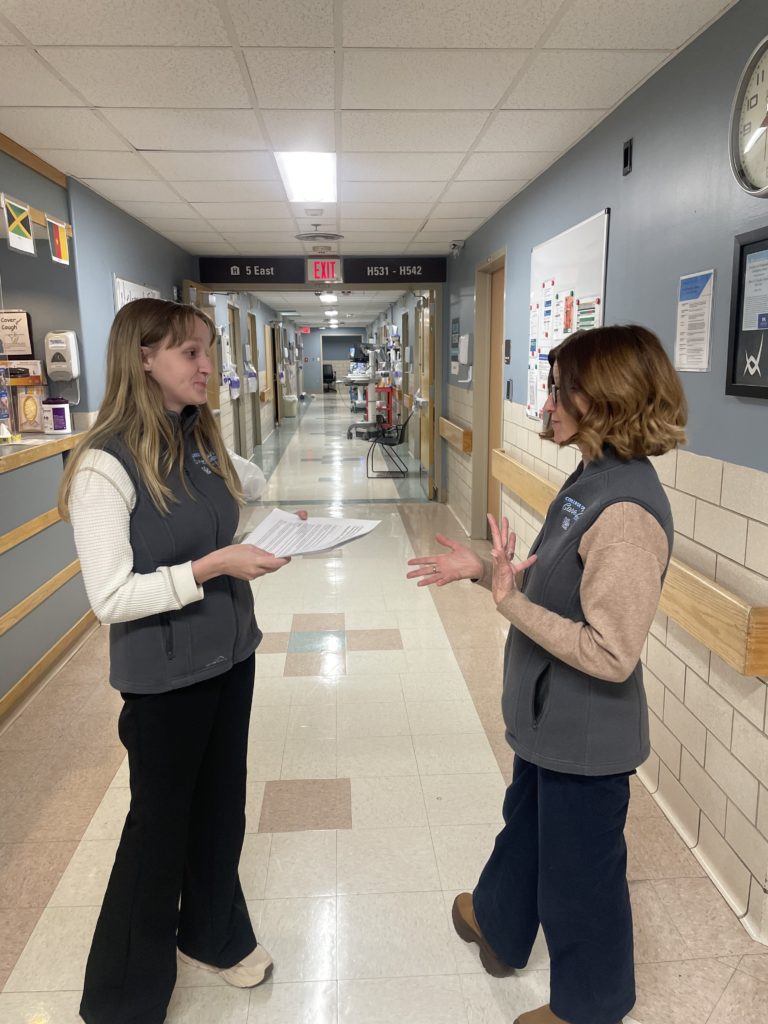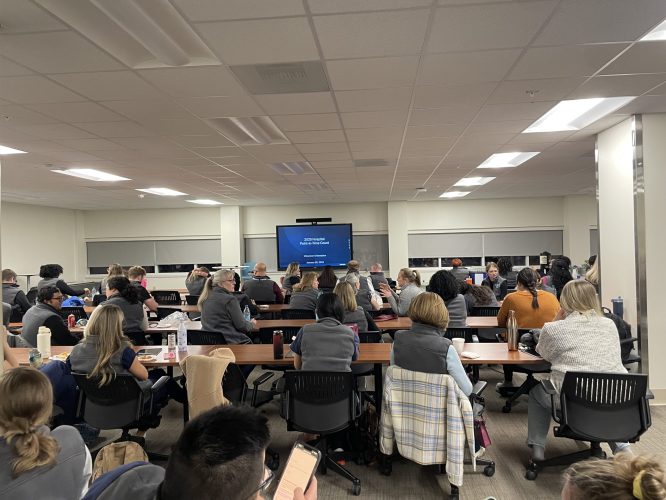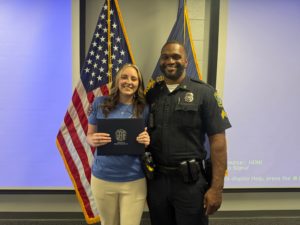LEXINGTON, Ky. — The University of Kentucky College of Social Work (CoSW), in collaboration with UK HealthCare, conducted the first-ever Hospital Point-in-Time Count on Wednesday, January 29th expanding efforts to assess housing instability in the community.
This project, called “Care2Count” was funded by CoSW and the UK CCTS Small Grants Program. Formally announced in November, Drs. Abigail Latimer and Lynden Bond partnered with leaders at UK HealthCare to expand annual Kentucky K-Count efforts, providing hospitals and researchers with crucial information to improve healthcare for individuals with housing needs or who are at risk of homelessness.
“We were absolutely overwhelmed by the support of our volunteers,” Bond said. “This effort would not have been possible without them, and we are incredibly grateful for their dedication to this initiative.”
Before the count began, the meeting room buzzed with anticipation as volunteers—comprising students, staff, faculty, and healthcare professionals—gathered for training. Bond and Latimer led an in-depth session, outlining key components of the initiative, including what to expect in the field, best practices for ethical engagement, and how to conduct surveys with sensitivity and respect. They emphasized the importance of building rapport with patients, ensuring accurate data collection, and navigating the logistical challenges of the evening.
Wearing gray vests emblazoned with ‘UK Care2Count‘, teams of volunteers—each paired with a healthcare professional—dispersed across UK Chandler Hospital, Good Samaritan Hospital, and Kentucky Children’s Hospital.
Supplied with iPads, they moved through hallways and hospital rooms, stopping at bedsides to ask quiet but essential questions. Their goal: to collect data that could reshape how healthcare systems identify and support patients experiencing housing insecurity.

The Point-in-Time Count, known in our community as the K-Count, is a federally mandated survey designed to estimate the number of individuals experiencing homelessness on a given night.
While traditional counts focus on shelters and public spaces, this initiative represents a new approach, capturing data on hospitalized individuals who may also be struggling with housing insecurity.
“The whole city has been doing this count for a long time, but the patients who have been admitted to our hospital have not been part of it until tonight,” shared Dr. Lindsay Ragsdale, chief medical officer at Kentucky Children’s Hospital. “We are so excited to have so many amazing volunteers help with this effort. By going floor to floor and surveying, we can better understand what kind of resources UK HealthCare should have in place. This effort provides a clearer picture of what our patients are facing in terms of shelter and housing stability.”
Looking ahead, Latimer hopes the initiative will inform more structured and responsive support system for people facing housing instability within healthcare settings.
“I would love to see this grow into supporting more dedicated interventionists inside healthcare settings—professionals who can address housing needs alongside healthcare needs, and vice versa.”
By incorporating housing assessments into healthcare settings, initiatives like Care2Count could inform more holistic approaches to patient care and resource allocation in the Lexington community and beyond.
If you’re interested in volunteering for next year’s count, you can learn more about the opportunity at: https://socialwork.uky.edu/point-in-time-count/.






